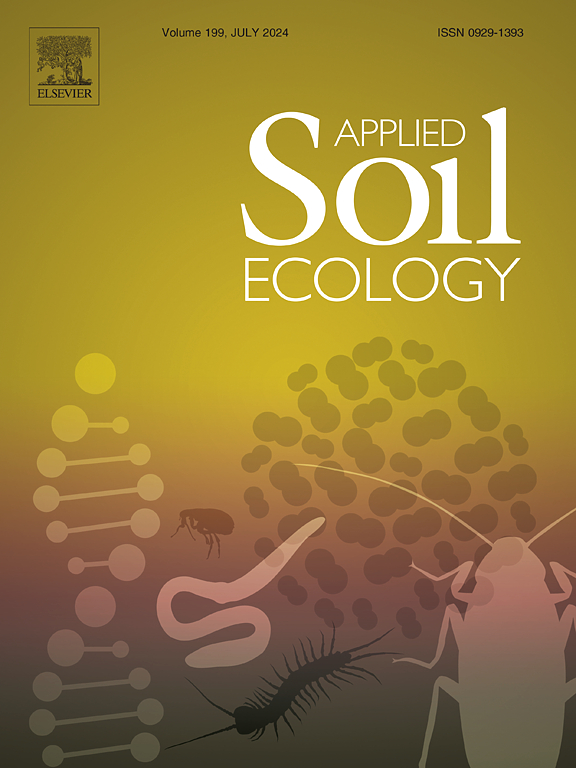The effects of a combination of maize/peanut intercropping and residue return on soil microbial nutrient limitation in maize fields
IF 4.8
2区 农林科学
Q1 SOIL SCIENCE
引用次数: 0
Abstract
Maize-leguminous intercropping (IN) and residue retention (RR) have been widely adopted to mitigate the negative effects of intensive agriculture on soil health. These practices can affect soil carbon (C), nitrogen (N), and phosphorus (P) cycles and their stoichiometric characteristics. However, the changes in soil fertility and microbial nutrient limitation under long-term IN and RR combined measures remain unclear. We investigated the covariance of soil-microbial-extracellular enzyme C, N, and P stoichiometric characteristics in maize fields based on a six-year maize/peanut IN system in northeast China. In addition, the energy (C) and nutrient (N, P) limitation of soil microorganisms was analyzed using the soil extracellular enzyme vector model. The results showed that (i). IN increased the SOC significantly. IN and RR increased the total nitrogen (TN) and total phosphorus (TP) contents. Furthermore, the combined measures of both IN and RR were more effective in improving soil nutrient contents than single measures. RR significantly reduced the soil C:P and N:P ratios, while IN had no significant effect on these ratios. (ii). IN exerted a significant positive effect on the contents of microbial biomass carbon (MBC), microbial biomass nitrogen (MBN), and microbial biomass phosphorus (MBP). Concurrently, it led to a significant reduction in the ratios of MBC:MBN and MBC:MBP. In contrast, RR induced a significant increase in the content of MBN and the ratio of MBC:MBN, while significantly decreasing the ratio of MBN:MBP. (iii) IN significantly increased the activities of β-1,4-glucosidase (BG), β-1,4-N-acetylglucosaminidase (NAG) + leucine aminopeptidase (LAP), and alkaline phosphatase (AP), while RR only significantly raised the activity of BG. Moreover, significant interaction effects were observed between IN and RR with respect to the activities of BG, NAG + LAP, and AP. Additionally, both IN and RR significantly increased the ratios of BG:(NAG + LAP) and BG:AP, with significant interaction effects also being noted for these ratios. (iv) Soil microorganisms in the study area were jointly limited by C and N. Microbial N limitation was closely related to TC and TP as well as MBN and MBP. IN, RR, and their combined application improved soil nutrient, MBN, and MBP contents, thereby enhancing the availability of N elements and thus alleviating the microbial N limitation to a certain extent. In conclusion, in the black soil area of Northeast China, the combined measures of intercropping and residue retention have a positive impact on crucial soil fertility indicators, including SOC, TN and TP contents, as well as microbial biomass. Moreover, these combined measures also alleviate soil microbial N limitation.
求助全文
约1分钟内获得全文
求助全文
来源期刊

Applied Soil Ecology
农林科学-土壤科学
CiteScore
9.70
自引率
4.20%
发文量
363
审稿时长
5.3 months
期刊介绍:
Applied Soil Ecology addresses the role of soil organisms and their interactions in relation to: sustainability and productivity, nutrient cycling and other soil processes, the maintenance of soil functions, the impact of human activities on soil ecosystems and bio(techno)logical control of soil-inhabiting pests, diseases and weeds.
 求助内容:
求助内容: 应助结果提醒方式:
应助结果提醒方式:


